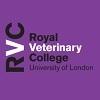Explore all the information on
Dairy cattle lameness
Welcome to the page about Dairy cattle lameness of Engormix; a source of knowledge on Dairy cattle lameness.
Neil Chesterton gives us recomendations about the hoof bath management....
Comments : 0
Recommendations: 1
Christer Bergsten (Swedish University of Agricultural Sciences) talked about the risk of infrequent claw care, its consequences and an action plan to prevent and treat lesions, during the International Conference Lameness in Ruminants 2015 in Valdivia, Chile. ...
Comments : 0
Recommendations: 0
Dr. Nick Bell (Royal Veterinary College-University of London) talked about monitoring, methods of detection and risk factors, during the International Conference Lameness in Ruminants 2015 in Valdivia, Chile. ...
Comments : 0
Recommendations: 0
Dr. Daniel Ollhoff (Pontifícia Universidade Católica do Paraná) explained the issue of lameness in Brazil and perspectives of solutions for it, during the International Conference Lameness in Ruminants 2015 in Valdivia, Chile....
Comments : 0
Recommendations: 0


The metabolic fate of deuterium-labeled choline in gestating and lactating Holstein dairy cows
Suggested link
Dr. Neil Chesterton (Energy Vets Taranaki) explained different factors to control lameness in cattle and established a comparison between Chile and New Zealand, regarding procedures, during the International Conference Lameness in Ruminants 2015 in Valdivia, Chile....
Comments : 0
Recommendations: 2
Dr. Jo Coombe (University of Melbourne) discussed the objectives, activities, and benefits of this program, during the International Conference Lameness in Ruminants 2015 in Valdivia, Chile....
Comments : 0
Recommendations: 1
Dr. Shahab Ranjbar (University of Sydney) discussed a methodology for dairy producers to identify variables contributing to lameness and possible allocation of resources, during the International Conference Lameness in Ruminants 2015 in Valdivia, Chile. ...
Comments : 0
Recommendations: 1
Several unsuccessful attempts to solve problems with digital dermatitis in the cowherd of Henning Bergmann’s organic milk production in the Danish town of Hoejer appear to be history with “Agron for organic use” from Vitfoss.
Henning Bergmann has an organic dairy herd with 110 cows, and for a long period, his cows have been suffering with digital dermatitis. These problems have now been solved with a very simple method.
During the last months, he has used...
Comments : 0
Recommendations: 0
Taking into account that interdigital dermatitis in ruminants is caused mainly by chemical and biologic agents, Benoit Astruc presents Vilofoss's solution to prevent and treat this disease, assuring 93% of skin regeneration....
Comments : 0
Recommendations: 0
Foot health or lameness has moved up to the second most expensive disorder that dairy cattle experience (mastitis is first). English workers reported 60 cases of lameness per 100 cows annually. Wisconsin researchers reported 73 cases per 100 cows in 30 herds (15 free-stall and 15 conventional herds averaging 23,060 pounds of milk). The cost was estimated at $122 per cow with lameness, hairy heel wart at $88 per case, sole ulcers at $369 per case, and horn disease at $227 per case. English...
Comments : 3
Recommendations: 0


The metabolic fate of deuterium-labeled choline in gestating and lactating Holstein dairy cows
Suggested link
Udder scald is a moist often foul smelling dermatitis between the udder and upper thigh or between the udder halves of cows. Very little is known about the exact cause. Dermatitis found between the udder and the upper thigh is often present in early lactation, thought to be a sequel to skin damage caused by the extra pressure against the upper thigh due to udder edema, is most frequently found in first lactation cows. Cornell University veterinarians reported in a 1600-cow herd...
Comments : 0
Recommendations: 0
Foot rot is a subacute or acute necrotic (decaying) infectious disease of cattle, causing swelling and lameness in one or more feet. The disease can become chronic, with a poorer prognosis for recovery if treatment is delayed, which results in deeper structures of the toe becoming affected. Weight gain is significantly reduced when grazing cattle contract the disease. In one three-year study, Brazle (1993) reported that affected steers gained 2.3 lbs. per day, while steers not affected...
Comments : 1
Recommendations: 0
Chances are it’s more than you think. If so, what can you do to minimize the problem? In a Minnesota survey of 17 herds, lameness scoring indicated that there were 2.5 times more lame cows than producers thought were present in their herds. Different surveys have reported the percentage of cows that scored lame averaged between 15 and 22.5%. No one likes to see a lame cow. We know lameness typically results in a loss in body condition, less...
Comments : 1
Recommendations: 0
Healthy hooves put you on solid footing for efficient milk production While walking, you notice a slight irritation and pain coming from your foot. It gradually gets worse and worse. Finally, you have to stop and remove a pebble from your shoe. Nothing else matters until you stop the pain. You’ve just experienced, in a small way, the significant disruption that lameness can have on one of your milking cows. Some herds I’ve recently visited have had production and...
Comments : 1
Recommendations: 0
Lameness is a major problem on our dairy farms, and its prevalence in the U.S. has increased in recent years. The current trend in the dairy industry is for housing cows in free stall systems with concrete flooring. Research has indicated that exposure to concrete flooring can potentially increase the proportion of cows with hoof disorders in comparison with other systems. We conducted a field study in 50 Minnesota free stall dairy herds (5626 Holstein cows housed in 53 high production...
Comments : 0
Recommendations: 0
Ensuring your dairy herd has healthy feet not only helps you sidestep unwelcome costs, it can put more milk in your bulk tank and more dollars in your pocket. One recent study suggests that a single cow coming up lame during a lactation could set you back by more than $200 in reduced production alone. Along with reduced milk production, direct losses from lameness include drug costs, veterinary fees and labour. Indirect costs are increased days open and premature culling. While estimates...
Comments : 1
Recommendations: 0


The metabolic fate of deuterium-labeled choline in gestating and lactating Holstein dairy cows
Suggested link
Our thanks to the author and Conference Organisers, a Committee consisting of both University and Industry colleagues. The full paper will appear in the Conference Proceedings ('Recent Advances in Animal Nutrition - 2007', edited by Phil Garnsworthy and Julian Wiseman) published by Nottingham University Press in the autumn of 2007 www.nup.com ...
Comments : 0
Recommendations: 0
Our thanks to the author and Conference Organisers, a Committee consisting of both University and Industry colleagues. The full paper will appear in the Conference Proceedings ('Recent Advances in Animal Nutrition - 2007', edited by Phil Garnsworthy and Julian Wiseman) published by Nottingham University Press in the autumn of 2007 www.nup.com ...
Comments : 0
Recommendations: 0
It has been long recognised that lameness in dairy cattle is important (Leech et al., 1960). It is usually recognised as coming third to infertility and mastitis as a reason for culling (Whittaker et al.,1983; Enting et al., 1997). Why then, despite numerous workshops and review papers on the subject, do farmers still regularly cite it as being a critical issue on their farms, and why does the incidence appear to be increasing? In this paper, I intend to propose a 3-step action plan to help...
Comments : 0
Recommendations: 0
It has long been recognized that cattle can be adversely affected by diets that have an abundance of grain (Owens et al., 1998). When the rate of starch fermentation exceeds the buffering capacity of the rumen, acids accumulate, ruminal pH falls, and in severe cases the animal dies. In less severe cases, the animal survives, but the ruminal wall is ulcerated and often permanently scarred. Because the tissues above the hoof are also affected (laminitis), the animal can suffer temporary or even...
Comments : 0
Recommendations: 0



.jpg&w=3840&q=75)













